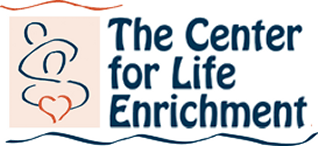By MAGGIE CLARK
ANNAPOLIS (February 16, 2011) — Maryland's largest juvenile facilities are chronically overcrowded, with youth often forced to sleep in "plastic boat beds" on the floor, according to a monitor's 2010 report released Tuesday.
The annual report by the Juvenile Justice Monitoring Unit, an independent monitor of Maryland's juvenile justice system, cited overcrowding, lengthy wait time for treatment, and substandard services for girls among the major problems facing the Department of Juvenile Services.
It also questioned whether all incidents were properly reported at the Cheltenham Youth Facility, where a teacher was killed a year ago this week.
The Department of Juvenile services responded to the overcrowding charges by writing: "DJS facilities experienced temporary population spikes that did not compromise safety and security. DJS consistently met youth-staff supervision ratios, sometimes through the use of overtime, including during temporary periods of high detention population."
The report found that the Cheltenham Youth Facility in Prince George's County, The Charles H. Hickey Jr. School in Baltimore County, The Baltimore City Juvenile Justice Center in Baltimore, the Thomas J.S. Waxter Children's Center in Prince George's County, and the Alfred D. Noyes Children's Center in Montgomery County experienced overcrowding episodes where children were forced to sleep on the floor in 2010.
DJS officials said boat beds were used according to national standards set by the American Correctional Association.
"When we place kids in the plastic beds, we do it consistent with national standards. This is not something unique to us," said Jay Cleary, communications director for DJS.
Juvenile Justice Monitoring Unit officials attribute the overcrowding to the lack of available resources for youth who are awaiting permanent placement at other treatment facilities.
"One of the drivers of the problem is the lack of available treatment resources. If you have a limited number of resources, you have a limited number of options," said Nick Maroney, acting director of the Juvenile Justice Monitoring Unit.
The report found that 385 youth were held for more than 60 days pending placement at a permanent facility, some for as long as 200 days or more.
In its response, DJS pointed out that those 385 youth represent about one half of one percent of the total number in juvenile facilities. They also point out that many of the youth waiting more than 60 days have other pending issues, like adult criminal charges.
"In many cases with pending placement youth, they've already been adjudicated and already been determined to need a secured setting for their treatment," Cleary said.
"That population by their nature requires more supervision than another group that doesn't need those services. It's a balance between the youth needs and public safety," Cleary said.
While youth are awaiting placement, they are not receiving intensive services, such as mental health care or behavioral therapy, like they would in a treatment facility. Their time served pending placement does not count towards their overall treatment time.
The report recommends youth await placement in community-based programs, and "not languish in the expensive, maximum security environment of a detention center."
Services for girls were also singled out as an area of concern for DJS.
"Gross disparities still exist in the provision of services to girls in the juvenile justice system in Maryland," wrote the Juvenile Justice Monitoring Unit.
The state's only all-girls facility, the Thomas J.S. Waxter Children's Center in Laurel, "comingles" committed girls and girls pending placement, a violation of state law.
Currently, the legislature is debating a bill that would require the state to offer "substantially equivalent" services for girls as it does for boys. Advocates are hopeful that new DJS Acting Secretary Sam Abed will address problems with girls' services.
"I'm hopeful that the new DJS administration will work aggressively to remedy the Department's longstanding neglect of girls," said Sonia Kumar, an attorney with the American Civil Liberties Union of Maryland.
"Because, however you want to slice it, the upshot is that today we have no more services for girls than we did a year ago — and no plan to get there. Surely, an agency with a quarter-of-a-billion-dollar operating budget can do better for the 200 or so girls in its custody," Kumar said. The monitors also found evidence that some incidents were not reported at Cheltenham Youth Facility, where teacher Hannah Wheeling, 65, was found sexually assaulted and strangled in February 2010. Incidents reported include assaults, injuries to staff, restraints used, and suicide attempts.
The report and the DJS response are available at:
www.oag.state.md.us/JJMU/.


